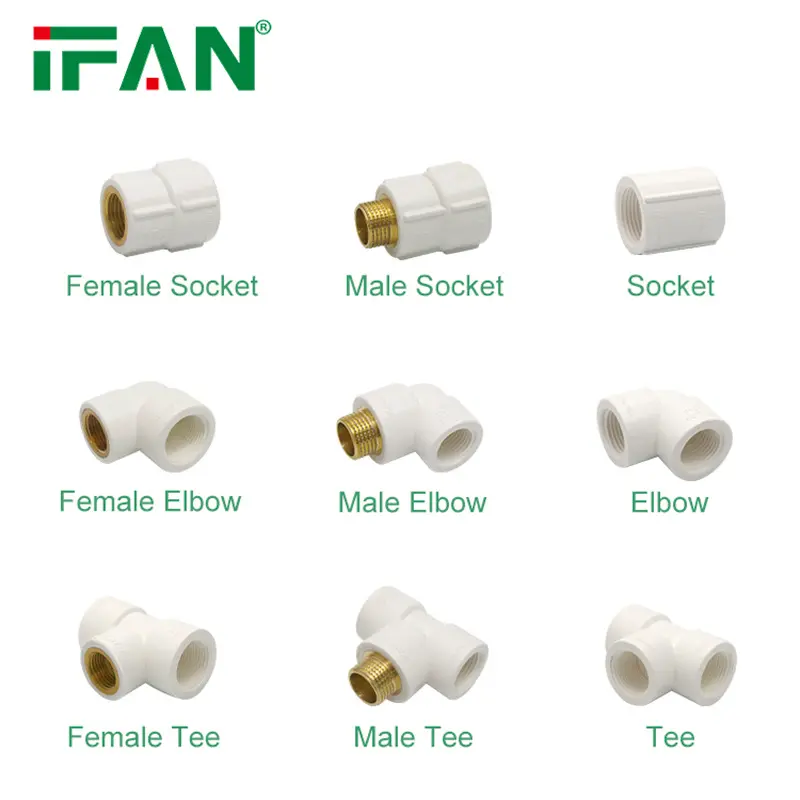Unplasticized Polyvinyl Chloride (UPVC) is a versatile material extensively used in the construction industry. UPVC fittings offer numerous advantages, including durability, low maintenance, and cost-effectiveness. These characteristics make UPVC a popular choice for various building applications, from plumbing to drainage systems.
Plumbing Systems
One of the primary uses of UPVC fittings is in residential and commercial plumbing systems. UPVC pipes and fittings are used to transport water and other fluids efficiently. They are known for their resistance to corrosion and scale build-up, which extends their service life. For example, in a typical home, UPVC pipes are often used for both hot and cold water supply lines. Their resistance to chemical reactions makes them ideal for conveying water without degradation over time.
Drainage and Waste Management
UPVC fittings are also widely used in drainage and waste management systems. Their smooth inner surfaces facilitate efficient flow and reduce the risk of blockages. In both residential and commercial buildings, UPVC pipes are employed for rainwater drainage, soil stacks, and waste pipes. For instance, in a multi-story building, UPVC waste pipes effectively handle wastewater from various floors, minimizing the risk of leaks and ensuring reliable performance.
Ventilation Systems
In building ventilation systems, UPVC fittings are used for ducting and air distribution. Their resistance to moisture and ease of installation make them suitable for handling air flows in HVAC systems. For example, in an office building, UPVC ducts are often used to deliver conditioned air from the central HVAC unit to different rooms. Their ability to resist condensation and maintain structural integrity ensures efficient air distribution.
Electrical Conduits
UPVC fittings are also employed as electrical conduits, protecting electrical cables from physical damage and environmental factors. These conduits are used in both residential and commercial buildings to route wiring safely. For instance, in a commercial office building, UPVC conduits are installed to house and protect electrical wiring running through walls and ceilings. Their non-conductive properties and resistance to environmental wear make them ideal for this application.
Building Facades and Structural Components
In addition to functional applications, UPVC is used in building facades and structural components. UPVC cladding panels and window frames offer a low-maintenance solution with good thermal insulation properties. For example, in a modern residential building, UPVC window frames provide durability and aesthetic appeal while requiring minimal upkeep. The material’s resistance to weathering ensures that these components maintain their appearance and functionality over time.
Cost-Effectiveness and Maintenance
One of the key advantages of UPVC fittings in construction is their cost-effectiveness. UPVC is generally less expensive than materials like metal or composite plastics. Additionally, UPVC fittings require minimal maintenance, which reduces long-term costs. For instance, a building’s plumbing system made of UPVC will likely incur lower maintenance costs compared to metal systems, which may require frequent inspections and repairs.
Thermal Insulation Properties
UPVC fittings also offer good thermal insulation properties, which contribute to energy efficiency in buildings. For example, UPVC windows and doors help to reduce heat loss and improve indoor comfort. In climates with extreme temperatures, UPVC’s insulating properties can lead to significant energy savings by maintaining stable indoor temperatures and reducing the load on heating and cooling systems.
Environmental Considerations
While UPVC has many advantages, there are environmental considerations to be aware of. The production and disposal of UPVC can have environmental impacts, such as the release of chlorine and other chemicals. However, UPVC is recyclable, and many systems are in place to handle its disposal responsibly. For instance, construction projects increasingly incorporate recycling programs for UPVC waste to minimize environmental impact.
Future Trends in UPVC Usage
The future of UPVC in construction looks promising with ongoing advancements in material technology. Researchers are developing enhanced versions of UPVC that offer better performance and reduced environmental impact. Innovations such as UV-resistant coatings and improved formulations for extreme temperatures are expanding the applications of UPVC in modern construction. For example, new UPVC products might offer enhanced resistance to environmental factors, making them even more suitable for demanding applications.
IFAN International Standard for PVC Tubing
IFAN’s PVC products adhere to a wide range of international standards, ensuring they meet the highest quality and performance criteria. These standards include BS 3505, BS 4346, ASTM D1785 SCH40, ASTM D1785 SCH80, DIN, GB, DWV, ASTM D2665, ASTM D2241, ASTM D2665, ASTM D2729, ASTM F441/F441M, ISO 1452 series, EN ISO 1452, DIN 8061/8062, GB/T 10002 series, AS/NZS 1477, JIS K6741, CSA B137.3, NSF/ANSI 14, and TIS 17-2532/1131-2535. Compliance with these standards ensures that IFAN’s PVC pipes and fittings deliver consistent performance, safety, and reliability in a variety of applications globally.
Conclusion
In conclusion, UPVC fittings play a crucial role in various construction applications. Their use in plumbing, drainage, ventilation, electrical conduits, and building facades highlights their versatility and effectiveness. The advantages of UPVC, including cost-effectiveness, low maintenance, and good thermal insulation, make it a popular choice in the construction industry. By understanding the applications and future trends of UPVC, builders and architects can make informed decisions to optimize performance and sustainability in their projects.
If you have read this article and have any questions, please feel free to contact IFAN. Below is our contact information:
Whatsapp:+86 13373827623
Email:[email protected]
























































